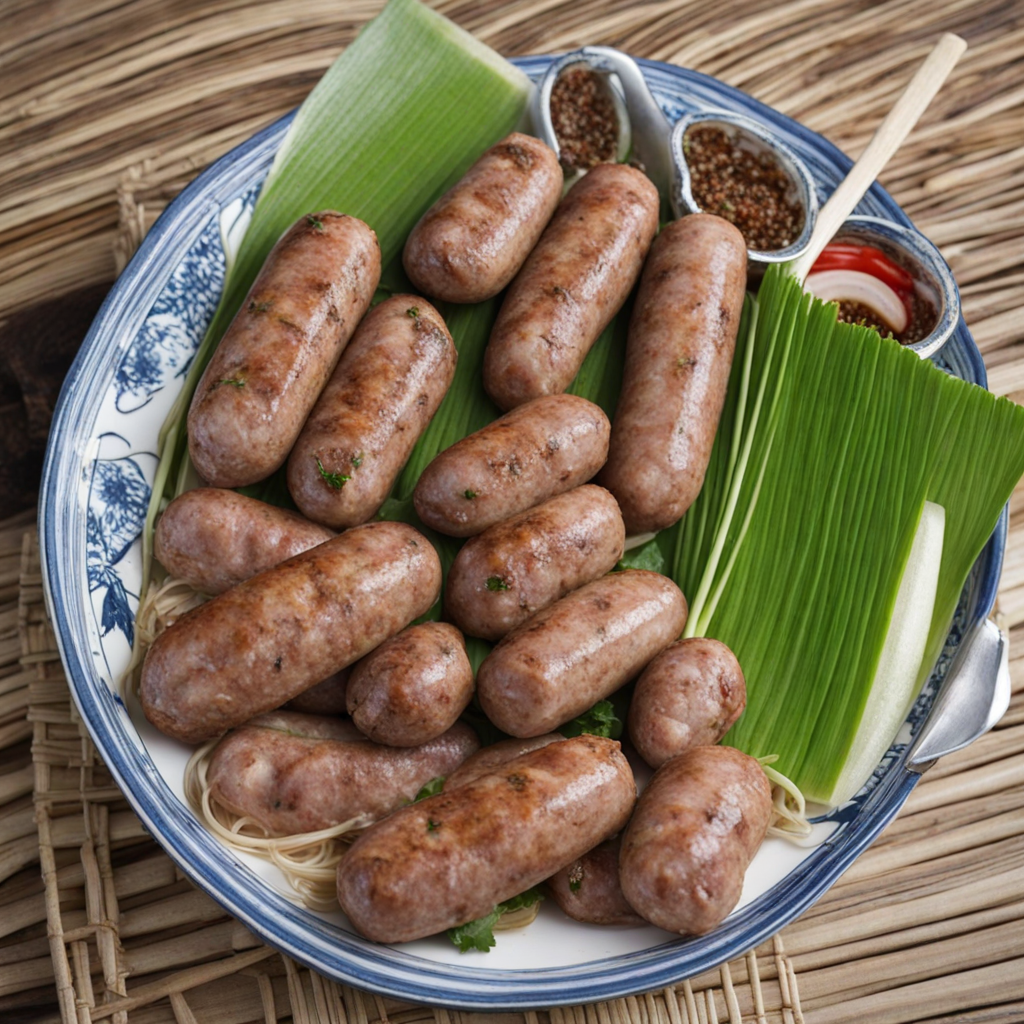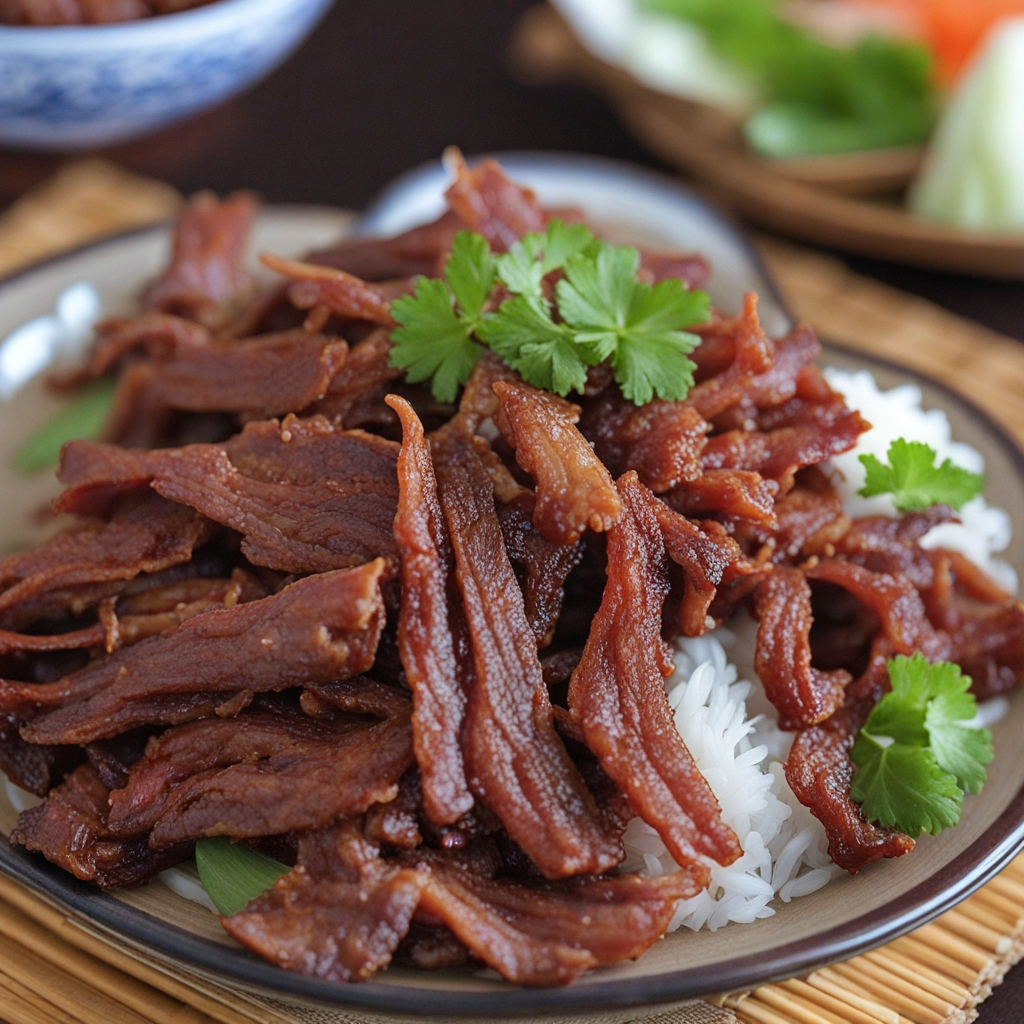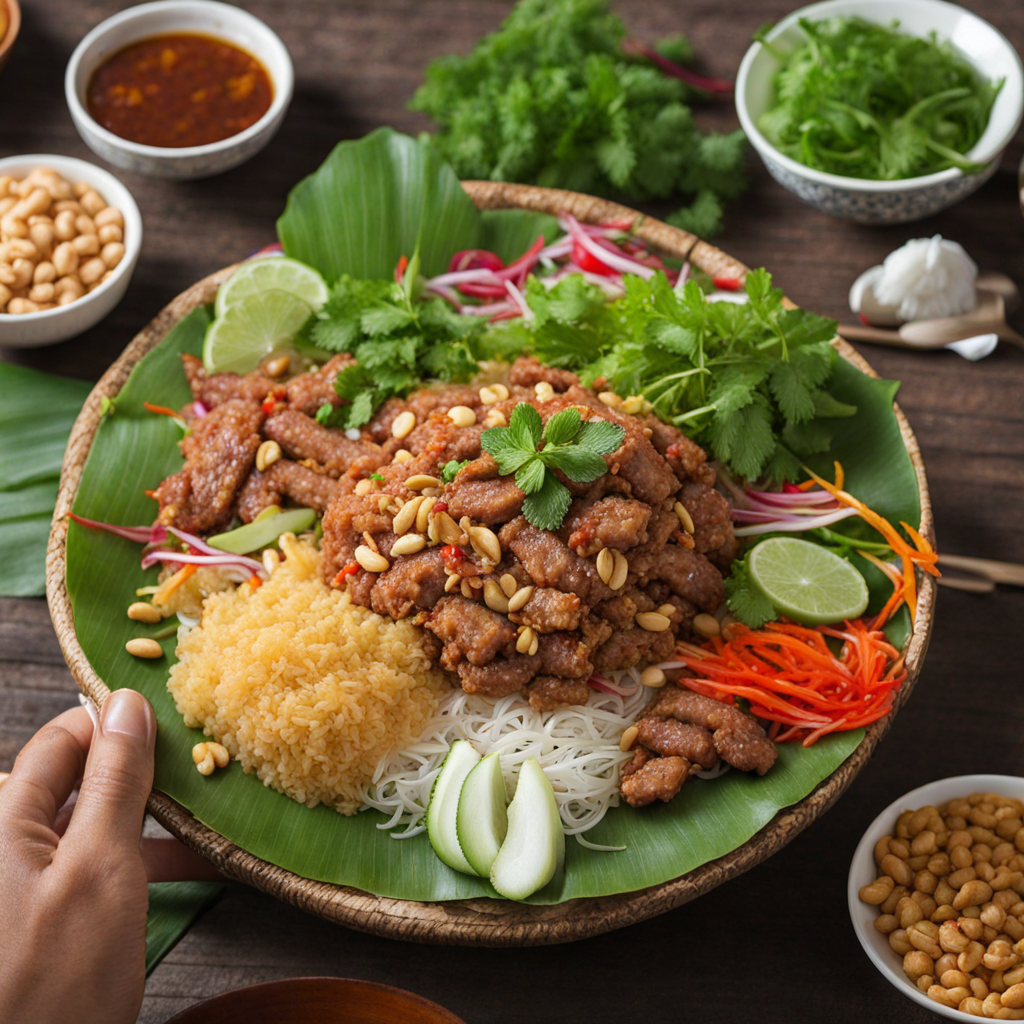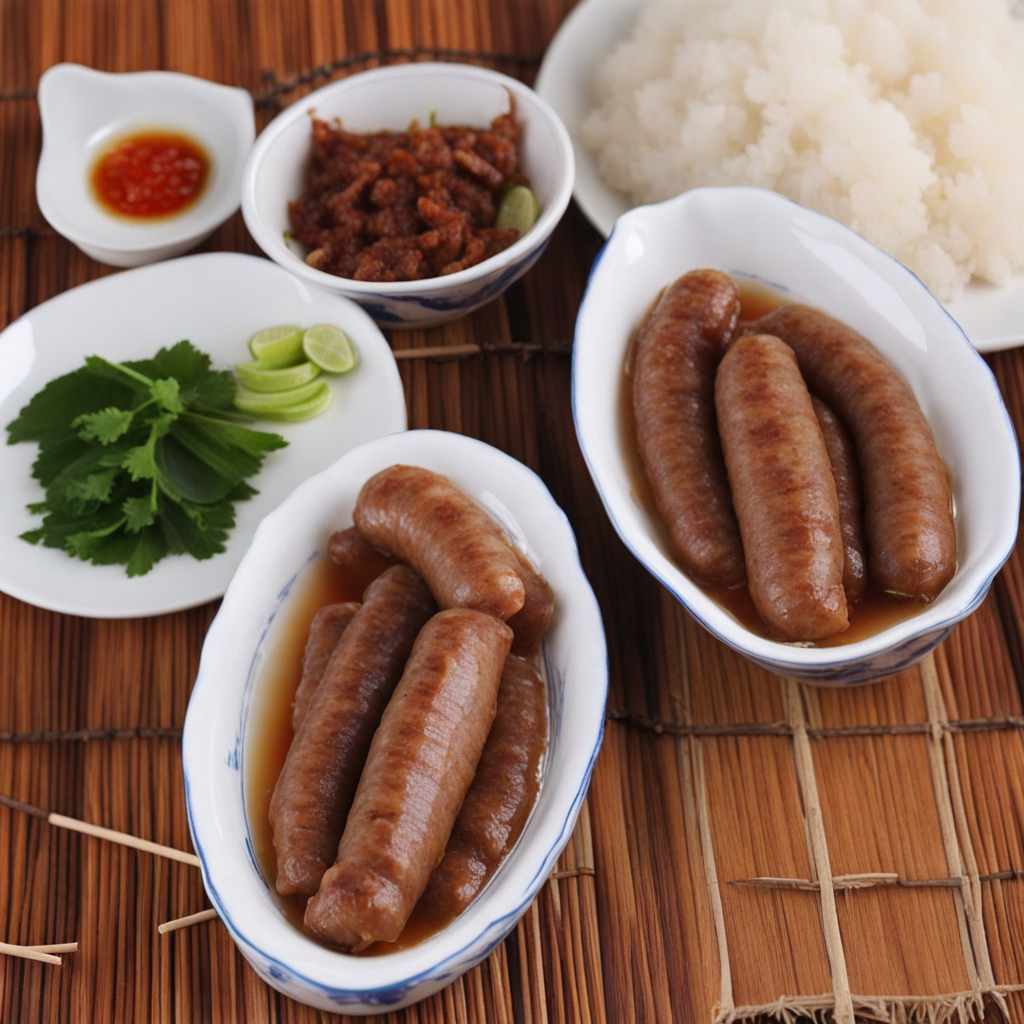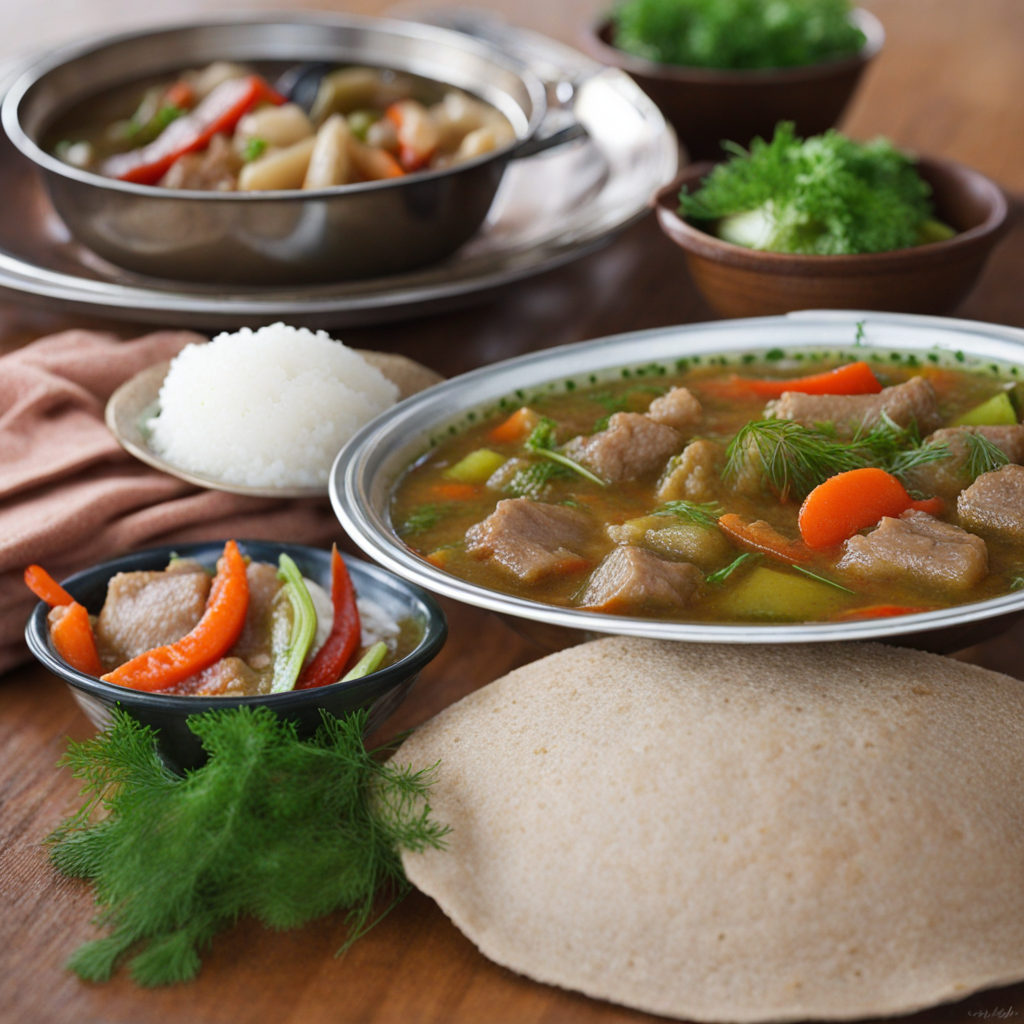Sai Oua
ໄສ້ເອື້ອ, pronounced "Sai Oua," is a traditional Lao dish that encapsulates the rich culinary heritage of Laos. This flavorful sausage is particularly popular in the northern regions, especially in Luang Prabang and the surrounding areas. Its history is deeply intertwined with the agricultural practices and cultural traditions of the Lao people, who have long relied on local ingredients and methods of preparation. Sai Oua is often enjoyed during festive occasions, family gatherings, or as a staple street food, showcasing the communal aspect of Lao dining. The flavor profile of Sai Oua is a symphony of spices and herbs, reflecting the vibrant taste of Laotian cuisine. The sausage is characterized by a slightly spicy and aromatic taste, with a perfect balance of savory and herbal notes. The use of lemongrass, kaffir lime leaves, and galangal imparts a refreshing brightness to the dish, while the chili peppers add a hint of heat. The combination of these ingredients creates a complex and satisfying flavor that dances on the palate, making it a beloved choice among locals and visitors alike. Preparation of Sai Oua begins with the selection of high-quality pork, usually a mix of fatty and lean cuts to ensure a juicy texture. The pork is minced or ground, then mixed with an array of aromatic herbs and spices. Key ingredients include lemongrass, garlic, shallots, coriander root, and chili, which are finely chopped or ground into
How It Became This Dish
Origin of ໄສ້ເອື້ອ ໄສ້ເອື້ອ, commonly transliterated as "Sai Oua," is a traditional sausage from Laos, particularly associated with the northern region, especially in areas like Luang Prabang and Vientiane. Its origins can be traced back to the rich culinary traditions of the Lao people, which have been influenced by various neighboring cultures, including Thai, Vietnamese, and Chinese. The name "Sai Oua" itself derives from the Lao words for "sausage" (ໄສ້) and "to wrap" (ເອື້ອ), reflecting the method of preparing this flavorful dish. Historically, the practice of making sausages in Laos can be linked to agricultural practices and the preservation of meat, a necessity in times when refrigeration was not available. The use of spices and herbs in Sai Oua is significant, as they not only enhance flavor but also serve as natural preservatives. Ingredients such as lemongrass, kaffir lime leaves, galangal, and garlic are fundamental to the sausage’s distinctive flavor profile, embodying the essence of Lao cuisine. Cultural Significance Sai Oua holds a special place in Lao culture, often served during festive occasions and family gatherings. It is a staple at celebrations such as weddings, New Year festivities, and religious ceremonies. The preparation of Sai Oua is often a communal activity, bringing families and communities together. This practice embodies the Lao concept of "boun," which emphasizes the importance of sharing food and the connections it fosters among people. In addition to its role in celebrations, Sai Oua is also a vital part of daily life in Laos. Street vendors often sell Sai Oua, making it accessible to locals and visitors alike. This street food culture allows individuals to experience authentic Lao flavors and provides an opportunity for economic activity for many vendors. The sausage can be enjoyed on its own, grilled to perfection, or served with sticky rice and fresh greens, highlighting the integral relationship between food and community in Lao society. Development Over Time Throughout the years, Sai Oua has evolved, adapting to the tastes and preferences of both locals and tourists. While the traditional recipe remains largely unchanged, variations have emerged. Some modern interpretations incorporate different meats, such as chicken or fish, catering to diverse dietary preferences and expanding its appeal. Additionally, some chefs experiment with the spice blend, introducing new flavors and ingredients while maintaining the essence of the original dish. The globalization of cuisine has also impacted the way Sai Oua is perceived and consumed. With the rise of the food tourism industry, Sai Oua has gained recognition beyond Laos, finding its way into restaurants and food festivals around the world. Chefs and food enthusiasts are increasingly interested in traditional dishes, prompting a revival of interest in Lao cuisine. Sai Oua has become a symbol of Lao culinary heritage, representing the country’s rich history and the unique flavors that define its gastronomy. Regional Variations While Sai Oua is widely recognized as a Lao dish, it is also important to note that regional variations exist. In different parts of Laos, the recipe may differ slightly based on local ingredients and culinary traditions. For instance, in the northern provinces, Sai Oua may have a stronger emphasis on herbs due to the availability of fresh produce. Conversely, in other regions, the sausage may be spicier or sweeter, reflecting local palates and preferences. The geographic diversity of Laos contributes to these variations, as the country is characterized by its mountainous terrain and rich biodiversity. Local farmers often utilize what is available in their surroundings, leading to unique adaptations of Sai Oua. This regional diversity not only enriches the dish itself but also emphasizes the connection between food and the environment, capturing the essence of how culture and geography shape culinary practices. Modern Recognition and Globalization In recent years, Sai Oua has garnered international attention, particularly as chefs and food bloggers seek to explore and showcase lesser-known cuisines. This newfound interest has helped to elevate Lao food on the global stage, providing opportunities for cultural exchange and culinary exploration. Food festivals, cooking classes, and online platforms have played significant roles in promoting Sai Oua, allowing people worldwide to appreciate and learn about this traditional dish. Moreover, the rise of social media has enabled home cooks and professional chefs to share their interpretations of Sai Oua, fostering a community of culinary enthusiasts who celebrate and innovate upon traditional recipes. This dynamic exchange of ideas has not only revitalized interest in Sai Oua but has also empowered Lao chefs to take pride in their heritage and introduce their cuisine to a broader audience. Conclusion In conclusion, the history of ໄສ້ເອື້ອ is a testament to the rich culinary traditions of Laos and the cultural significance of food in bringing people together. From its humble origins as a method of preserving meat to its current status as a beloved dish enjoyed both locally and internationally, Sai Oua encapsulates the essence of Lao cuisine. As it continues to evolve and adapt, this traditional sausage remains a symbol of the country’s heritage, reflecting the flavors, ingredients, and communal values that define Lao culture. The journey of Sai Oua is not just one of food, but a narrative woven into the very fabric of Lao identity, celebrating the past while looking toward the future.
You may like
Discover local flavors from Laos



